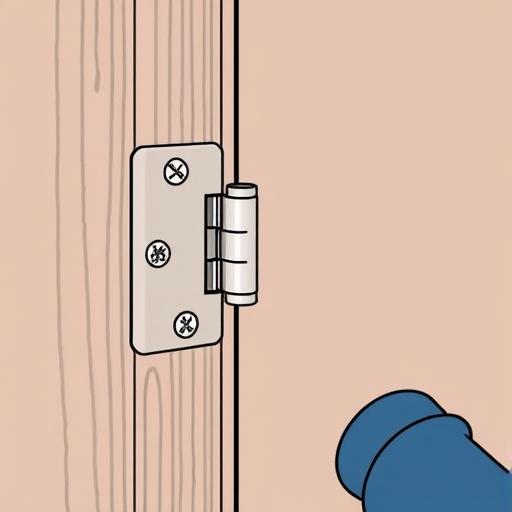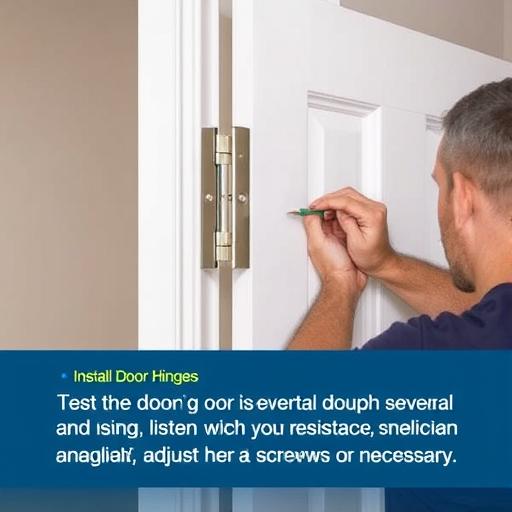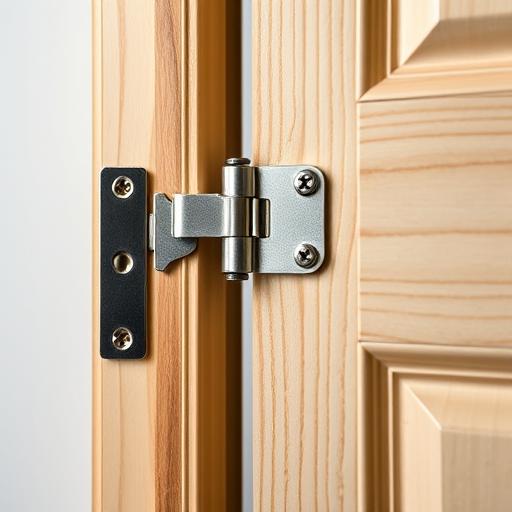How to Install Door Hinges
Properly installed door hinges are essential for ensuring smooth operation, security, and longevity of your doors. Whether you’re installing a new door, replacing old hinges, or making repairs, doing the job correctly can save you from future headaches. This guide will walk you through the process, covering everything from understanding hinge types to the tools and techniques needed for a professional finish.
Understanding Door Hinges
Hinges come in various types, each designed for specific applications. Butt hinges, the most common type, are ideal for interior and exterior doors. Concealed hinges are perfect for modern cabinetry or flush-mounted doors, while pivot hinges are often used for heavy or decorative doors. Knowing which hinge to use ensures both functionality and aesthetics.
Parts of a Door Hinge
A standard hinge consists of two leaves, a knuckle, and a pin. The leaves are attached to the door and frame, while the knuckle connects them, allowing the door to swing. The pin secures the knuckle, enabling smooth movement. Understanding these components helps you appreciate their role in maintaining door functionality.
Tools and Materials Needed
- Essential tools: Screwdriver, chisel, drill, measuring tape, pencil, and hammer.
- Materials: Door hinges, screws, and wood filler (if needed).
- Safety gear: Gloves and safety glasses.
Step-by-Step Guide to Installing Door Hinges
Preparing the Door and Frame
Start by measuring and marking the hinge placement on the door and frame. Proper alignment is crucial for smooth operation. Use a measuring tape to ensure consistent spacing and a pencil to mark the positions.
Chiseling the Mortise
A mortise is a recess carved into the door and frame to allow the hinge to sit flush. Carefully chisel out the marked area, ensuring the depth matches the hinge thickness. Precision here prevents gaps and ensures a snug fit.
Attaching the Hinges to the Door
Align the hinge with the mortise and secure it using screws. Ensure the hinge is flush with the door surface to avoid unevenness. Tighten the screws firmly but avoid over-tightening, which can strip the wood.

Mounting the Door to the Frame
Position the door in the frame and attach the hinges. Check for proper alignment by opening and closing the door. Make adjustments as needed to ensure the door operates smoothly.

Testing and Adjusting the Door
Test the door’s functionality by opening and closing it several times. Listen for squeaks or resistance, which may indicate misalignment. Adjust the hinges or screws as necessary to resolve any issues.

Tips for a Professional Finish
- Lubricate hinges periodically to maintain smooth operation.
- Paint or finish hinges to match the door and frame for a cohesive look.
- Regularly check and tighten screws to prevent loosening over time.
Common Mistakes to Avoid
- Incorrect hinge placement or alignment can cause the door to stick or sag.
- Using improper tools or screws may damage the door or hinge.
- Over-tightening or under-tightening screws can affect the hinge’s performance.
Conclusion
Installing door hinges may seem like a small task, but it plays a significant role in ensuring your door functions properly and securely. By following this guide, you can achieve a professional installation that enhances both practicality and aesthetics. Remember to maintain your hinges regularly to prolong their lifespan and keep your doors operating smoothly.
FAQs
What type of hinge is best for interior doors?
Butt hinges are the most suitable for interior doors due to their durability and ease of installation.
How do I know if my hinges need to be replaced?
Signs include squeaking, misalignment, rust, or difficulty opening and closing the door.
Can I install hinges without chiseling a mortise?
While mortises are typically necessary for flush installation, some hinges (like surface-mounted ones) may not require them.
How do I fix a door that won’t close properly after hinge installation?
Check the alignment and tighten or adjust the hinges as needed. Ensure the mortise is properly sized.
What is the standard number of hinges for a door?
Typically, doors up to 6 feet tall require two hinges, while taller or heavier doors may need three.







